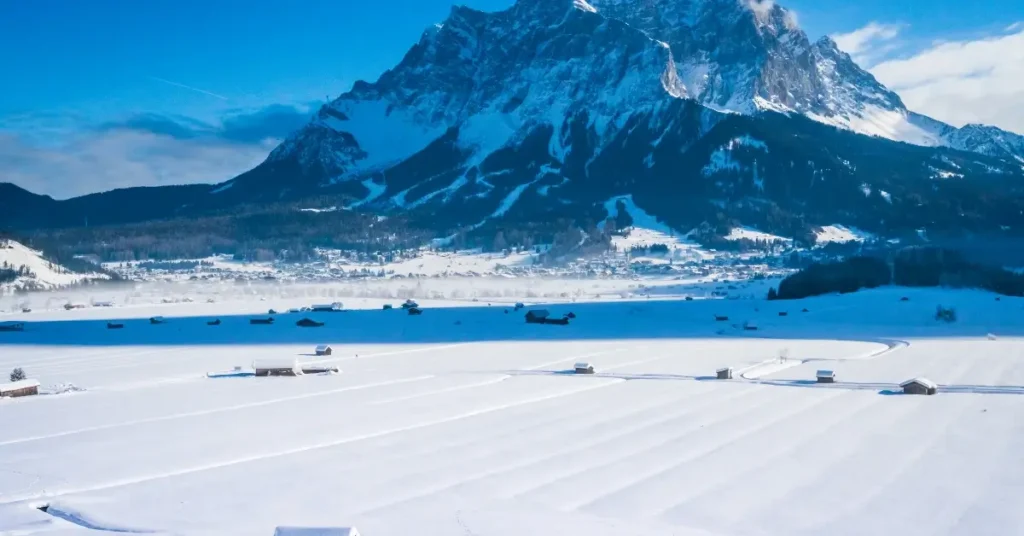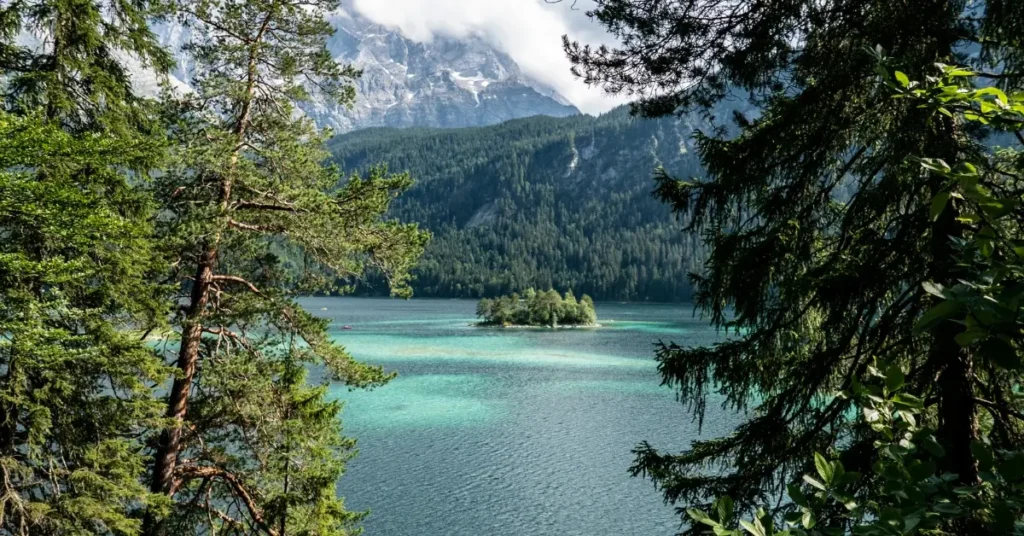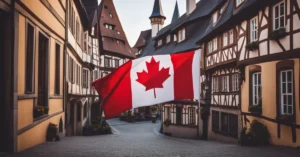Diving into Germany’s natural beauty feels like hitting the jackpot. Imagine standing amidst the grand Bavarian Alps or wandering through the dense, enchanting Black Forest. The country hides a treasure trove of outdoor wonders, ready for you to explore. Love hiking? Crave cycling? Or maybe, just soaking up jaw-dropping views is your thing. Well, Germany rolls out the green carpet for all. **Adventure seekers** and **nature lovers** buckle up; there’s a slice of paradise waiting just for you. Keep reading, and I’ll spill the beans on why Germany’s great outdoors is your next must-visit spot.
One of the most popular destinations for lovers of the nature in Germany is the Bavarian Alps. With their snow-capped peaks, crystal-clear lakes, and picturesque villages, the Alps offer a truly unforgettable experience. Whether you’re an experienced hiker or a beginner, there are plenty of trails to suit all levels of ability. And with charming towns like Garmisch-Partenkirchen and Berchtesgaden nearby, there’s plenty to see and do when you’re not out exploring the mountains.
If you’re looking for something a little less rugged, the Black Forest is another must-see destination for nature lovers. With its dense forests, rolling hills, and charming villages, the Black Forest is the perfect place to unwind and reconnect with nature. Whether you’re exploring the famous Murg Valley or simply taking a leisurely stroll through the woods, the Black Forest is sure to leave you feeling refreshed and rejuvenated.
Landscapes of Germany
Nature in Germany is known for its breathtaking landscapes that attract tourists from all over the world. From the dense forests to the towering mountains, Germany has something to offer for everyone. In this section, we will explore some of the most beautiful landscapes that Germany has to offer.
Black Forest
The Black Forest, or Schwarzwald, is a mountainous region in southwest Germany. It is famous for its dense forests, picturesque villages, and stunning natural beauty. The region is also known for its cuckoo clocks, which are handmade in the traditional way by local artisans. Visitors to the Black Forest can enjoy hiking, cycling, and skiing, as well as sampling the local cuisine and wine.
Bavarian Alps
The Bavarian Alps are a mountain range in southern Germany. The region is famous for its stunning scenery, including snow-capped peaks, crystal-clear lakes, and lush green valleys. Visitors to the Bavarian Alps can enjoy skiing, hiking, and mountain biking, as well as exploring the charming villages and towns that dot the region. The area is also home to some of Germany’s most famous castles, including Neuschwanstein Castle, which inspired the design of the Disney castle.

The Rhine Valley
The Rhine Valley is a picturesque region in western Germany that is famous for its vineyards, medieval castles, and charming towns. The region is also home to the Rhine River, which flows through the heart of the valley and provides a stunning backdrop for boat trips and scenic walks. Visitors to the Rhine Valley can enjoy wine tasting, hiking, and exploring the historic towns and villages that line the river.
Germany’s natural landscapes are truly breathtaking and offer visitors a chance to experience the beauty of nature in all its glory. Whether you are looking for adventure, relaxation, or culture, Germany has something to offer for everyone.
Flora and Fauna
When it comes to nature in Germany, the country is home to a diverse range of plant and animal species. In this section, we’ll take a closer look at the flora and fauna that can be found in Germany.
Native Plant Species
Germany has a rich flora, with around 20,000 native plant species. The country is home to a variety of forests, including beech, oak, and coniferous forests. One of the most famous forests in Germany is the Black Forest, which is known for its tall firs and unique landscape. The forest is also home to a variety of plant species, including the Black Forest gentian, which is a rare and protected plant.
Other notable plant species in Germany include the edelweiss, which is a mountain flower that grows in the Alps, and the heather, which is a common plant found on heathlands and moors.
Wildlife in Germany
Germany is also home to a diverse range of wildlife. In the forests, you can find European wildcats, European badgers, lynxes, bats, deer, red squirrels, and red foxes. The country’s native birds include the boreal owl, bean goose, carrion crow, and mistle thrush.
Germany’s rivers and lakes are home to a variety of fish species, including trout, pike, and carp. In the ocean waters, you can find whales, porpoises, and sharks.
Overall, Germany’s flora and fauna are an essential part of the country’s natural beauty. Whether you’re exploring the forests or the mountains, there’s always something new and exciting to discover.
Climate and Weather Patterns

As we explore the beauty of nature in Germany, it’s important to understand the climate and weather patterns that shape the environment. Germany has a temperate climate with four distinct seasons, each bringing its own unique changes to the landscape.
Seasonal Changes
Spring in Germany is a time of renewal, with temperatures ranging from 5°C to 15°C (41°F to 59°F). The countryside is awash with colorful blooms, and the forests come alive with the sound of birdsong. Summer temperatures range from 20°C to 30°C (68°F to 86°F), and the days are long and sunny. It’s an ideal time to explore the country’s many lakes and rivers or take a hike in the mountains.
Fall brings cooler temperatures, with highs ranging from 10°C to 20°C (50°F to 68°F). The leaves on the trees turn golden and red, and the vineyards are a riot of color as the grapes are harvested. Winter temperatures range from -5°C to 5°C (23°F to 41°F), and snow is common in many parts of the country. It’s a magical time to explore the Christmas markets or take a sled ride in the mountains.
Impact on Nature
The changing seasons in Germany have a profound impact on the country’s flora and fauna. Many animals hibernate during the winter months, while others migrate to warmer climates. In the spring, birds return from their winter homes, and the forests are filled with the sound of mating calls. In the summer, the meadows are alive with butterflies and bees, and the forests are home to a wide variety of wildlife.
Fall is a time of plenty, with the trees shedding their leaves and the fields full of ripe crops. Many animals are busy gathering food for the winter months ahead. In the winter, the landscape is transformed by snow and ice, and many animals must adapt to survive in the harsh conditions.
Overall, the climate and weather patterns in Germany play a vital role in shaping the country’s natural environment. From the snow-capped peaks of the Alps to the rolling hills of the Black Forest, there’s always something new to discover in this beautiful country.
Environmental Conservation
As we explore the beauty of nature in Germany, it is important to recognize the efforts being made towards environmental conservation. The country has a rich history of environmentalism, and today, there are numerous organizations and initiatives that are dedicated to preserving the natural environment.
Sustainability Efforts
Germany is committed to achieving a sustainable future, and this is reflected in the various initiatives that have been put in place. For instance, the country has set ambitious targets for reducing greenhouse gas emissions, with a goal of achieving a 55% reduction by 2030. There are also efforts underway to promote renewable energy, with a target of producing 65% of the country’s electricity from renewable sources by 2030.
In addition, there are numerous programs aimed at promoting sustainable practices in agriculture, forestry, and other industries. For example, the German Sustainable Building Council (DGNB) provides certification for buildings that meet certain sustainability standards. The council evaluates buildings on factors such as energy efficiency, water conservation, and materials used in construction.
Protection of Endangered Species
Germany is home to a diverse array of plant and animal species, many of which are endangered or threatened. To protect these species, the country has established numerous conservation areas and national parks. These areas are managed with the goal of preserving natural habitats and promoting biodiversity.
In addition, there are numerous organizations dedicated to protecting endangered species. For example, the Nature and Biodiversity Conservation Union (NABU) is one of the oldest and largest environmental organizations in Germany. The organization works to protect habitats, promote sustainable development, and raise awareness about environmental issues.
Overall, Germany’s commitment to environmental conservation is impressive, and there are numerous initiatives and organizations working towards a sustainable future. As we continue to explore nature in Germany, it is important to recognize and support these efforts.
Our Thoughts on Nature in Germany

Germany is a country that is widely known for its stunning natural landscapes. As we explore the country, we are continually impressed by the diversity and beauty of its natural wonders. From the towering mountains and thick forests to the thousands of lakes and rivers, we feel that Germany’s natural beauty is truly unparalleled.
One thing that we appreciate about nature in Germany is the emphasis on sustainability. The country has made significant efforts to protect and preserve its natural landscapes, with 16 national parks, 104 nature parks, and 16 UNESCO biosphere reserves. These protected areas offer visitors the opportunity to experience nature in its purest form while also ensuring that future generations can enjoy the same natural wonders.
Another aspect of nature in Germany that we love is the abundance of outdoor activities available. Hiking, cycling, and skiing are just a few of the many ways to explore the country’s natural beauty. Whether you’re a seasoned adventurer or a casual nature lover, there is something for everyone to enjoy.
One of our favorite natural wonders in Germany is the Elbe Sandstone Mountains. These stunning mountains, located near the Polish border, offer a lifetime’s worth of cliffs, mountain chains, caves, valleys, and ravines to explore and tackle. The area is a favorite among hikers and climbers, and it’s easy to see why.
Overall, we believe that nature in Germany is something truly special. With its emphasis on sustainability, abundance of outdoor activities, and stunning natural landscapes, it’s no wonder that the country is a popular destination for nature lovers from around the world.
FAQ – Nature in Germany
What is nature like in Germany?
Nature in Germany offers a rich tapestry of dense forests like the Black Forest, expansive river valleys, and mountain ranges such as the Alps. With its commitment to conservation, Nature in Germany is a haven for outdoor enthusiasts and wildlife, boasting well-preserved natural parks and a variety of native species.
What part of Germany is the most scenic?
The most scenic part of Nature in Germany is often considered to be the Bavarian Alps, with their majestic peaks and picturesque villages. Another contender for the most scenic Nature in Germany is the Rhine Valley, renowned for its rolling vineyards and historic castles dotting the landscape.
What is a natural landmark of Germany?
A prominent natural landmark of Nature in Germany is the Black Forest, known for its dense woodlands and traditional cuckoo clocks. Additionally, the striking chalk cliffs of Rügen, located in the Baltic Sea, are another natural marvel that showcases the diverse Nature in Germany.
What are your thoughts on nature in Germany? Let us know in the comments!







